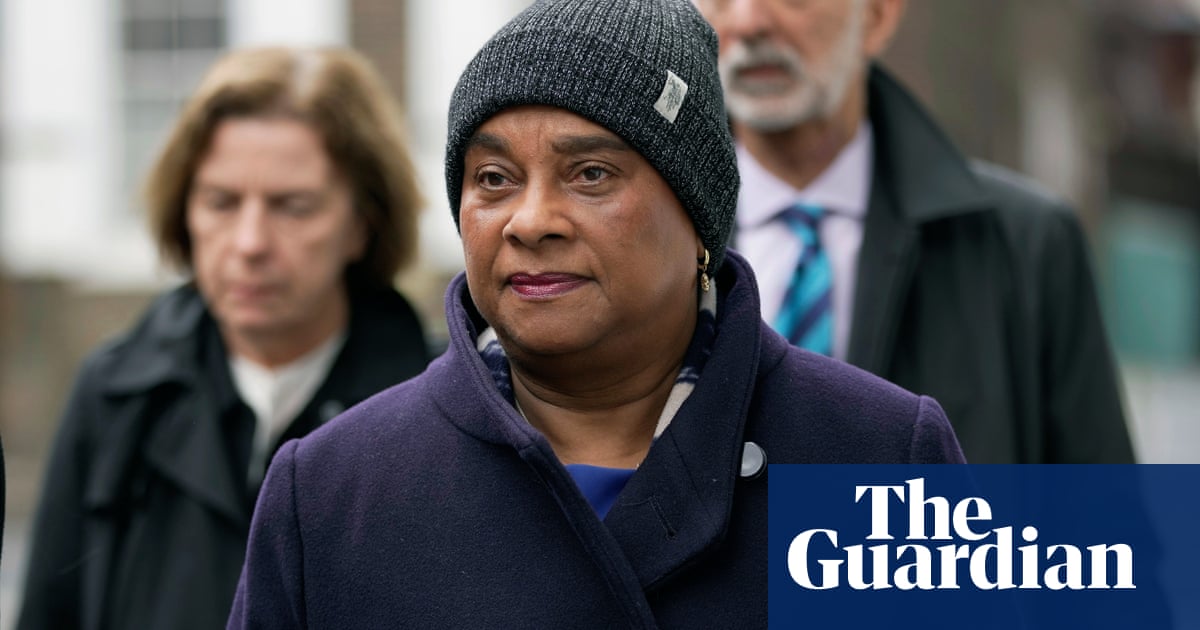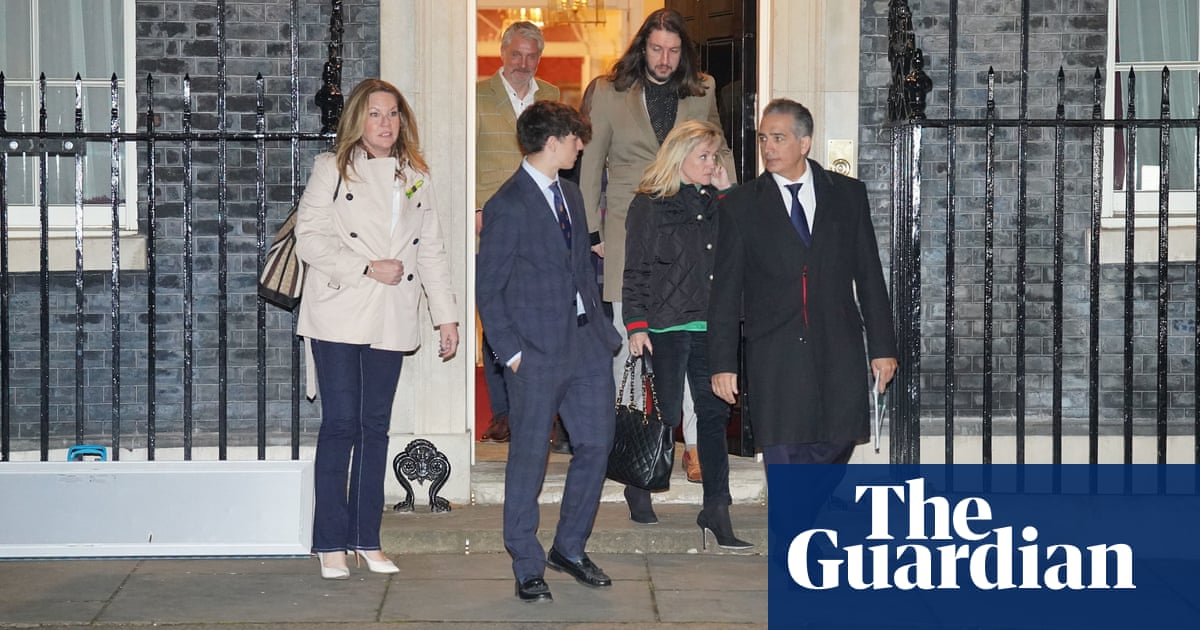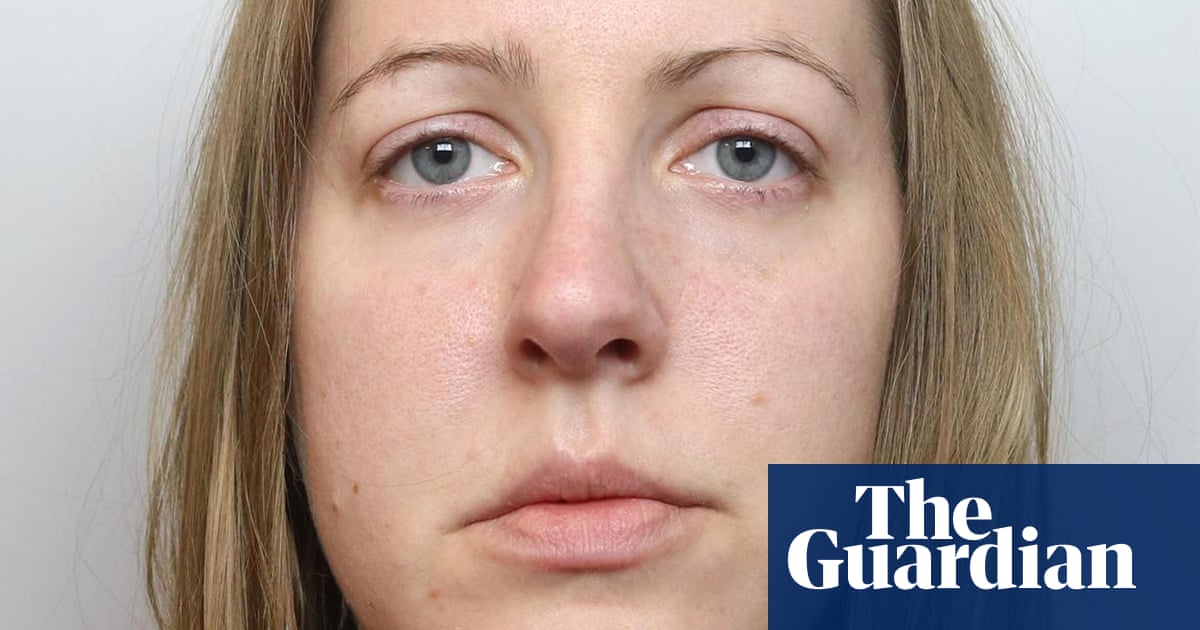
When the public inquiry into the crimes of the former nurse Lucy Letby opened in Liverpool last month its chair, Lady Justice Thirlwall, dismissed concerns about the safety of the convictions as “noise”. The judge cautioned that questions being raised were increasing the distress of parents whose children had died or been harmed.
Letby was found guilty across two trials of murdering seven babies and attempting to murder seven others at the Countess of Chester hospital (COCH) in 2015 and 2016. Thirlwall pointed out that in May this year, the court of appeal refused Letby permission to appeal, and she said it was not the role of her inquiry to review the convictions.
Yet questions about the case, and the number of experts raising them, have continued to mount. Letby is being represented by a new barrister, Mark McDonald, and a number of specialists including leading neonatologists – doctors who specialise in treating premature babies – are voluntarily working with him on an application to the Criminal Cases Review Commission. Having examined the detail, these experts consider there are more plausible alternative causes of the babies’ deaths and collapses than those for which Letby was convicted.
The Guardian can now report on further key concerns about the case, including the approach taken by Cheshire police and the Crown Prosecution Service, and the conduct of the trials.
‘The prosecutor’s fallacy’
At Letby’s first trial, the prosecution used a chart that showed which nurses were on shift when babies were allegedly attacked. The chart was presented to the jury to illustrate the central allegation that Letby was the one constant presence.
Its use has prompted unusually vocal criticism from leading statisticians. They argue that the chart represents a classic example of the “prosecutor’s fallacy”, in which an investigation starts with only a suspicion, and a case is built to support it, rather than all possible evidence and explanations having been rigorously explored.
Jane Hutton, a professor of statistics at the University of Warwick, said of the shift chart and other elements of the case: “It’s a large pile of crockery, much of which is broken. Such a pile does not hold water, however big it is.”
The Thirlwall inquiry has heard that the police investigation was based on statistical coincidence from the beginning.
According to documents seen by the Guardian, seven doctors collaborated on compiling a report to police in May 2017. It presented details of 13 babies who had died and eight more who had deteriorated. They said Letby had been present at 11 of the deaths, adding: “The likelihood of this occurring by chance alone is very low.”
In their opening statement to the inquiry, hospital managers said that when they finally went to Cheshire police, on 5 May 2017: “It was explained that there was a notable high statistical relationship between Letby and babies deteriorating on the unit, but no other evidence.”
At a subsequent meeting a week later, according to the managers’ statement: “Assistant Chief Constable Cheshire [Darren] Martland said: ‘This is uncomfortable as there is no specific allegation at this point to suggest a criminal act.’”
Five days later Cheshire police announced they had opened a criminal investigation.
Validity of statistics
The Guardian has now learned that from an early stage, Cheshire police recognised the case involved statistics – and they had initially engaged Hutton.
According to emails seen by the Guardian, in April 2018 an officer on the investigation approached Hutton, who has extensive experience in medical research. Without naming Letby, he asked Hutton whether she could put a figure on how likely it was to be just a coincidence for one member of staff to be on duty “during all the deaths/collapses” in the neonatal unit, “ie 1 in a million etc”.
She informed the police that a proper statistical inquiry would not concentrate on one member of staff from the outset, but instead required full research into all possible explanations for any increase in babies collapsing including their medical conditions and prematurity, as well as the performance of the unit. Reviews commissioned by the hospital had found medical explanations for nearly all of the deaths, criticised the standard of care on the unit and noted a lack of senior doctors.
Cheshire police then signed a consultancy agreement with Hutton and agreed fees, the documents suggest. The force did not proceed to commission Hutton’s analysis at that time, but contacted her again in 2021 after Letby had been charged. A video call was arranged, but an officer later cancelled the call.
“We have had a further meeting this afternoon where we have informed the prosecutors that we were looking at the validity of statistical evidence again in the case,” he wrote in an email. “The prosecutor does not agree with our line of inquiry and has instructed us not to pursue this avenue, any further, at present.”
Neither the initial engagement with Hutton nor the CPS instruction to the police to drop their line of inquiry into the “validity of the statistical evidence in the case” were disclosed to Letby’s defence team, the Guardian understands.
Peter Green, emeritus professor of statistics at the University of Bristol, said: “This is an extraordinary revelation. Statisticians have criticised the staff chart used in the trial of Letby as a classic misuse of statistics. Now we know that the prosecution decided not to proceed with a proper analysis by Prof Hutton, a distinguished statistician who has decades of extremely relevant experience.”
McDonald, Letby’s new barrister, said: “It is deeply concerning that no information regarding meeting with Professor Hutton or the material she had requested was ever disclosed to the defence.”
Hutton said she could not comment owing to confidentiality.
Statisticians have expressed such serious concerns that the Royal Statistical Society (RSS) is expected to make a statement in the coming weeks.
The RSS notably intervened previously in 2001, when Green was its president, about the statistics used to prosecute Sally Clark, who was convicted of murdering two of her children. Those criticisms helped to overturn her convictions as well as those of Angela Cannings and Donna Anthony, who had also been wrongly convicted of killing their children, verdicts the court of appeal had upheld.
The backstairs
At Letby’s main trial, the jury acquitted her of two charges and could not reach a majority verdict on six more. The CPS pursued a retrial in one of those cases, that of Baby K, whom Letby was accused of attempting to murder by dislodging the endotracheal tube that was assisting the child’s breathing.
During the course of the retrial in June, the lead prosecutor, Nicholas Johnson KC, had to tell the jury that important evidence presented in the first trial had been wrong.
To establish where nurses and doctors were at particular times, Cheshire police and the CPS had used records of entry through a secure door between the labour ward and the neonatal unit, where babies needing medical care were treated.
In the first trial, Johnson explained, the prosecution had used the door swipe records the wrong way round, so a nurse or doctor stated to have been leaving the neonatal unit was actually entering, and if they were stated to have entered, they had left.
The Guardian understands that Cheshire police only discovered the error in February 2024, six months after the main trial ended. The force tasked an officer with reviewing how the door swipe evidence had been used, and he found it had formed part of the evidence relating to eight other babies.
The review, however, suggested the mistake had no significant effect on the convictions. The only case in which it was central, the review found, was that of Baby K.
There are further questions about the value of the swipe data as a means of trying to prove who was in the neonatal unit, or that Letby, whom no one ever saw inflicting any harm, was alone with babies at relevant times.
Michele Worden, who worked at the unit as an advanced neonatal nurse practitioner until 2007 and has remained in close contact with staff, told the Guardian the unit had another door leading to a backstairs. She said the door had a keypad system – still in place when Letby worked there – so no specific staff data was recorded from it.
“Staff were going in and out of that door all the time and up and down the stairs,” Worden said. “To me, even without the discovery [that] they used it the wrong way round, the swipe data was worthless.”
A CPS spokesperson said: “We are confident the initial mislabelling of door swipe data had no meaningful impact on the prosecution. The defence did not deem the issue significant enough to include it in Letby’s unsuccessful [request for leave to] appeal, and when the initial error was highlighted at Letby’s retrial, it did not prevent a second jury finding her guilty.”
Letby not on shift
A particular case that is generating questions about the safety of Letby’s conviction is that of Baby C. Born prematurely on 10 June 2015 weighing 800g, the child died four days later. Letby was convicted of murder on the charge, based significantly on the evidence of the prosecution’s lead expert witness, Dr Dewi Evans. He alleged she injected air into the baby’s stomach via a nasogastric tube (NGT), which is connected through the nose to enable feeding.
That method of harming babies was also alleged by the prosecution, and found by the jury, to be a cause of collapse for two other babies, I and P.
The charge regarding Baby C relied on a joint experts’ report signed by Evans in August 2022, two months before the trial. It stated that the evidence for air having been injected into the stomach could be seen on an X-ray of the child taken on 12 June 2015.
The paediatric pathologist instructed by the prosecution, Dr Andreas Marnerides, told the court that all the prosecution’s experts had come to the same finding, based on that X-ray. However, during the trial it emerged that Letby had not worked on that day, nor on the two previous days after Baby C’s birth.
Evans gave evidence in the trial when it had already been established by earlier witnesses that Letby had not worked with Baby C before the X-ray was taken. In the witness box, he departed from his written report and proposed two new possible causes of the child’s collapse. He said a large volume of air caused the diaphragm to splint on 13 June, when Letby was on duty, and that air may have been injected into the bloodstream.
Challenged by Letby’s barrister at the trial, Benjamin Myers KC, Evans acknowledged he had never mentioned either of those potential causes of death throughout five years of working on the case, and in nine written reports. “Sorry,” Evans said, explaining his change of evidence, “this baby was put in harm’s way.”
Johnson maintained in his closing speech that Letby killed Baby C using air down the feeding tube as her method, saying she did so on 13 June, and that the prosecution based the allegation on Evans’s evidence.
The court of appeal judgment highlighted Evans having changed his evidence on the witness stand. “If he did step over the line in relation to one baby (Baby C – in which he gave his opinion on the cause of the baby’s collapse for the first time in his evidence to the jury), that did not invalidate his evidence generally.” The three judges nevertheless denied Letby’s leave to appeal.
Dr Mike Hall, a retired consultant neonatologist and visiting professor in neonatal medicine, advised Letby’s legal defence team but was not called to give evidence at the trial. He said: “I feel a particular sense of injustice about Baby C because all four main prosecution witnesses [who gave evidence about the child] either directly or indirectly led the jury to believe that part of the cause of the demise was evidence from an X-ray taken on 12 June 2015. Letby had never been involved with that baby prior to that X-ray.”
In response to questions from the Guardian, Evans said he had now completed a new report for the police on Baby C’s medical condition, based on “corrected” medical notes. He explained he changed his opinion at the trial after hearing staff give their evidence. Evans said Letby murdered Baby C during her night shift of 13 June, but he declined to say whether he maintained this was by injecting air down the NGT. This month, the Telegraph reported that Evans had said he now believed the cause of death was air injected intravenously, not down the NGT.
“Last week I carried out a detailed review from the corrected case notes, only received by me in June 2022, and have now worked out what led to Infant C’s death in more detail, and have completed my report,” Evans told the Guardian. Asked for his current opinion on the baby’s cause of death, he replied: “I think that in my evidence I said that it was the result of air into the bloodstream (but I have not seen the transcript).”
Asked to clarify further, Evans said Cheshire police had now told him not to discuss Baby C in the press.
The allegation that Letby murdered babies by injecting air down their nasogastric tubes has, as the Guardian reported in July, been one of the lightning rods for the criticism from medical experts, who described the theory as nonsensical or “rubbish”, “ridiculous”, “implausible” and “fantastical”.
McDonald said: “Dr Dewi Evans appears to be shifting his opinion regarding one of the most fundamental aspects of the case, the medical evidence. I have now spoken, and have reports, from some of the most senior neonatologists in the country, and none of them has yet agreed with Dr Evans.”
Evans has consistently maintained that his evidence was correct.
The Guardian contacted the lawyer representing Baby C’s mother at the Thirlwall inquiry. She replied that they did not wish to comment.
A CPS spokesperson pointed to the fact that Letby had been convicted in two separate trials and said: “In May, the court of appeal dismissed Letby’s leave to appeal on all grounds – rejecting her argument that expert prosecution evidence was flawed.”
A spokesperson for Cheshire constabulary said: “In light of the ongoing investigations and current active legal proceedings we will not be commenting any further on this case.” A spokesperson at the Countess of Chester hospital NHS foundation trust also said they could not comment in light of these investigations.
As the Thirlwall inquiry continues to hear evidence, the questions about the safety of Letby’s convictions are mounting.












